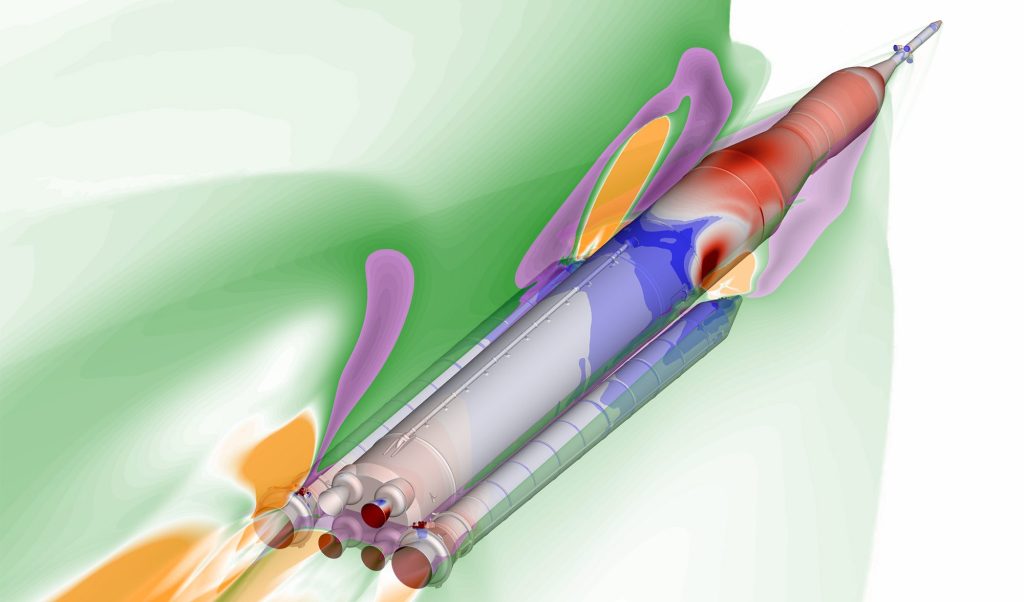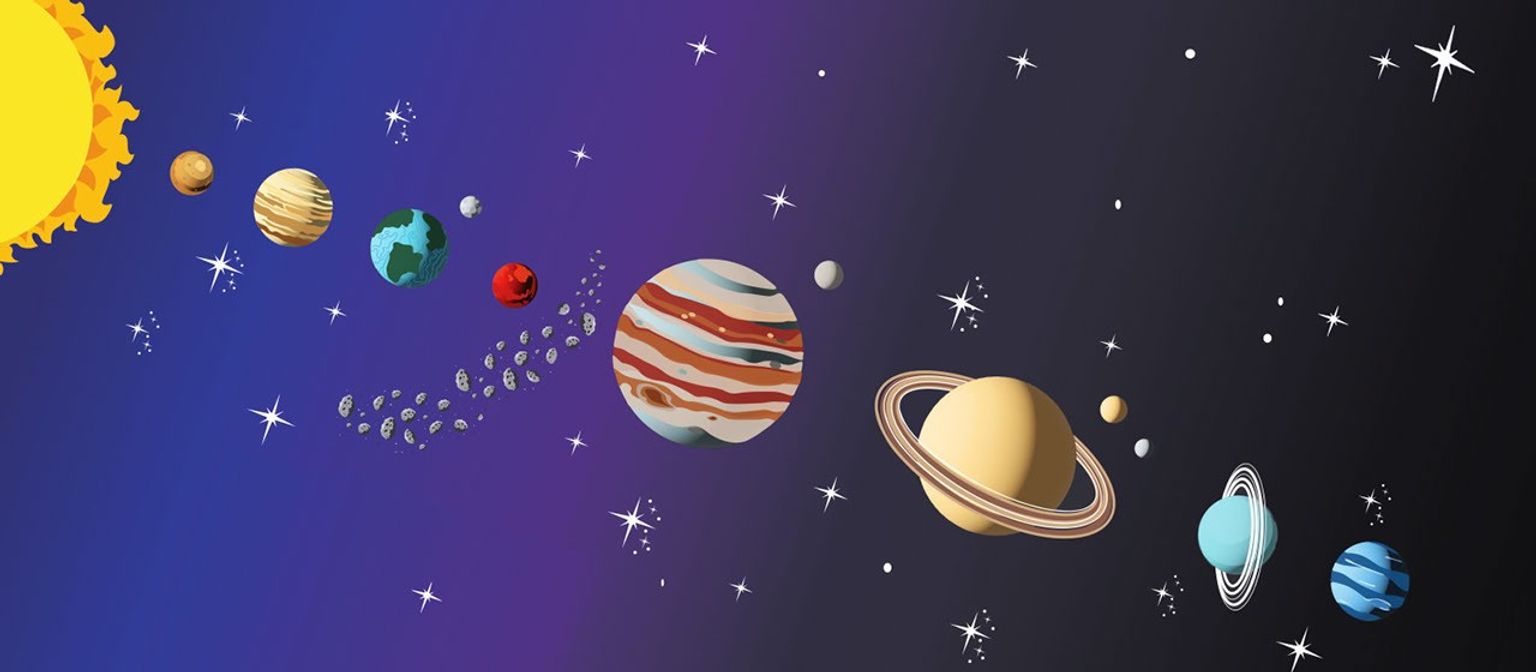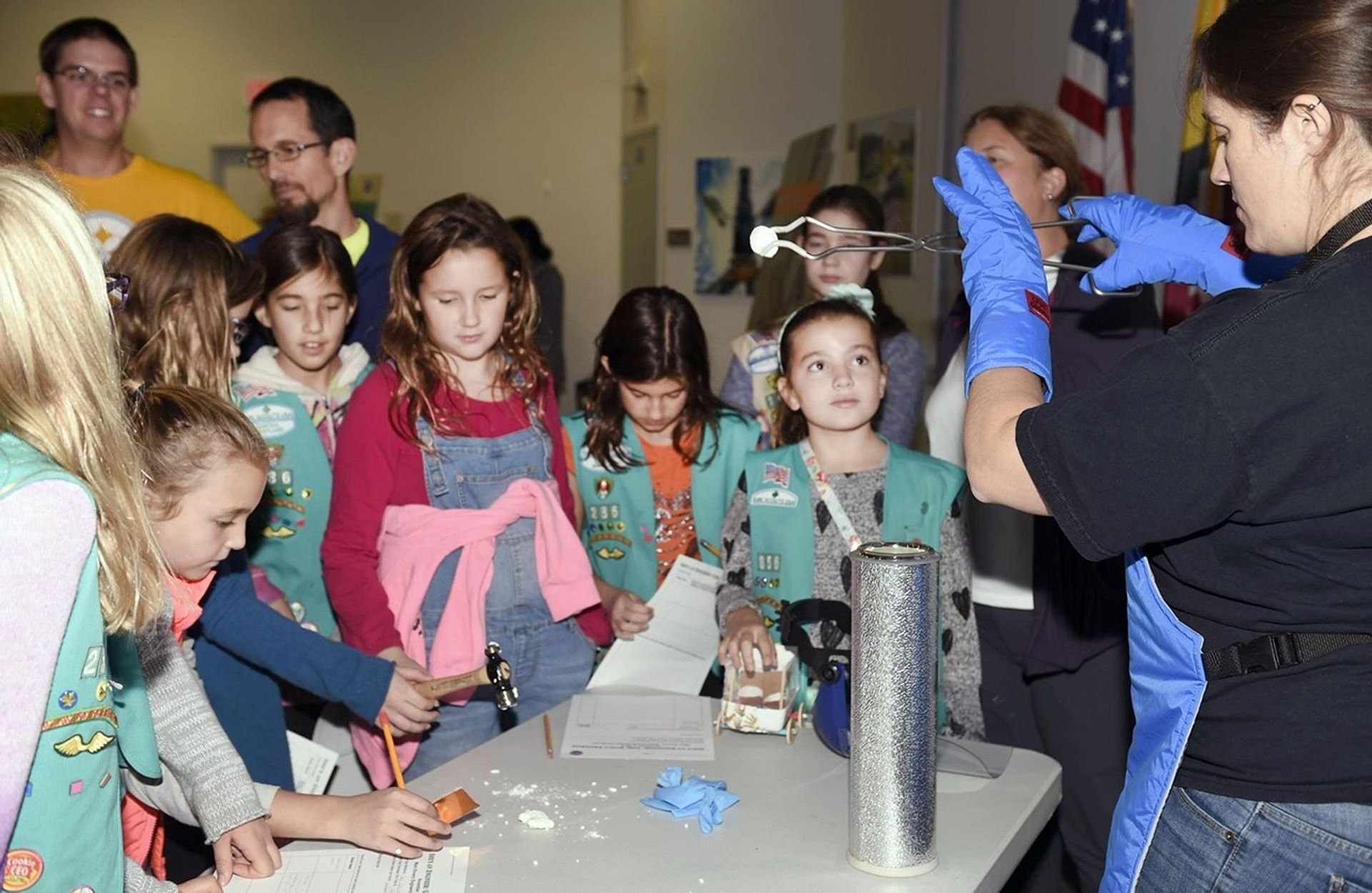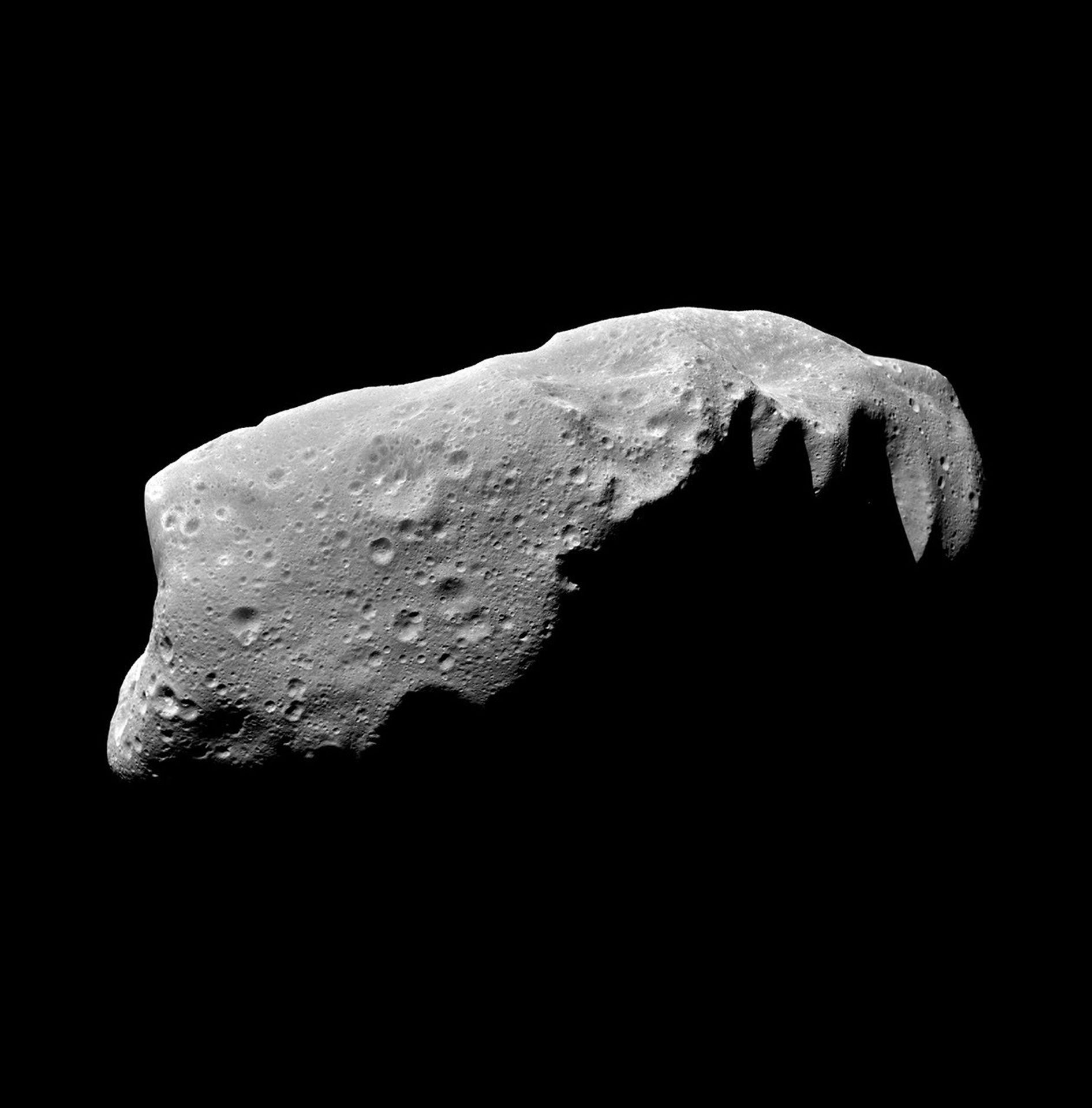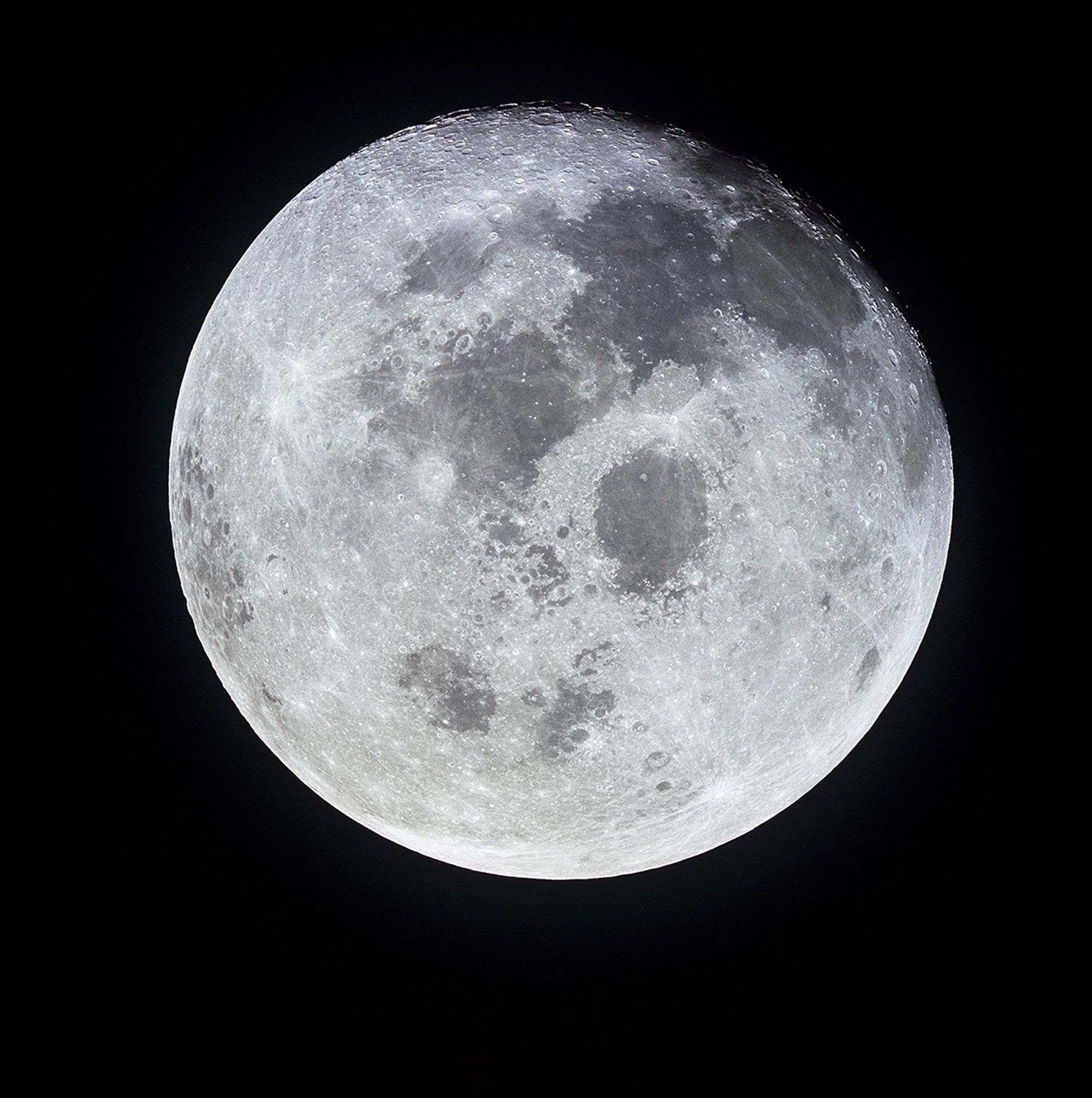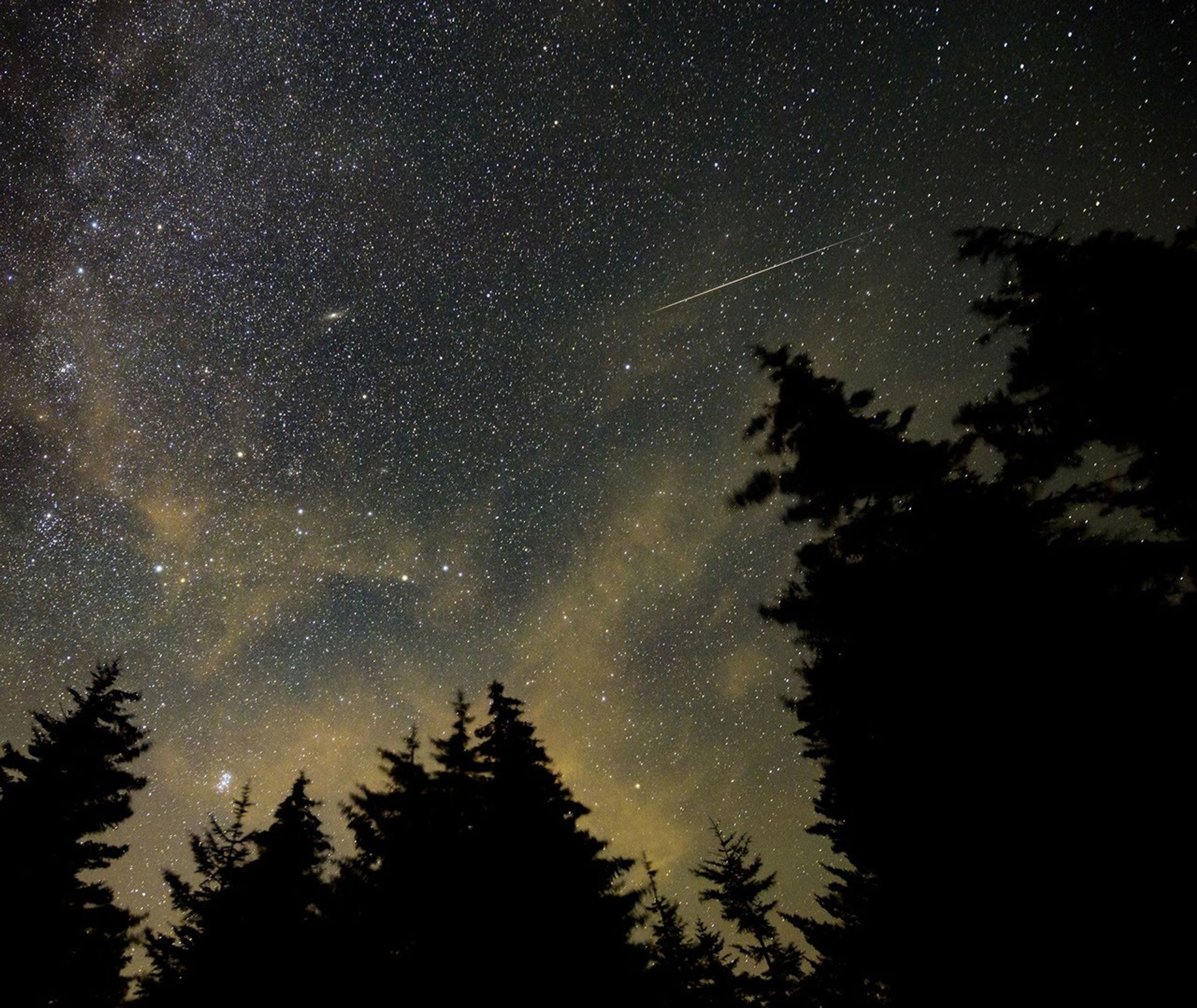Discover Space with NASA!
Planetary science is the study of planets, moons, asteroids, comets and everything else that orbits the sun...including the Earth! Through the field of Planetary Science, we begin to understand how our solar system formed, what it’s made of, and whether life might exist beyond our planet.
NASA's Planetary Science Division explores our solar system through a fleet of amazing missions. Right now, rovers like Perseverance and Curiosity are exploring Mars, spacecraft like Lucy and Psyche are on their way to take a closer look at asteroids, and Europa Clipper recently launched to one of Jupiter’s icy moons. Recently, the OSIRIS-REx mission brought a sample of an asteroid back to Earth! Each mission brings us closer to answering big questions about how our cosmic neighborhood works, and you can be a part of it, too!
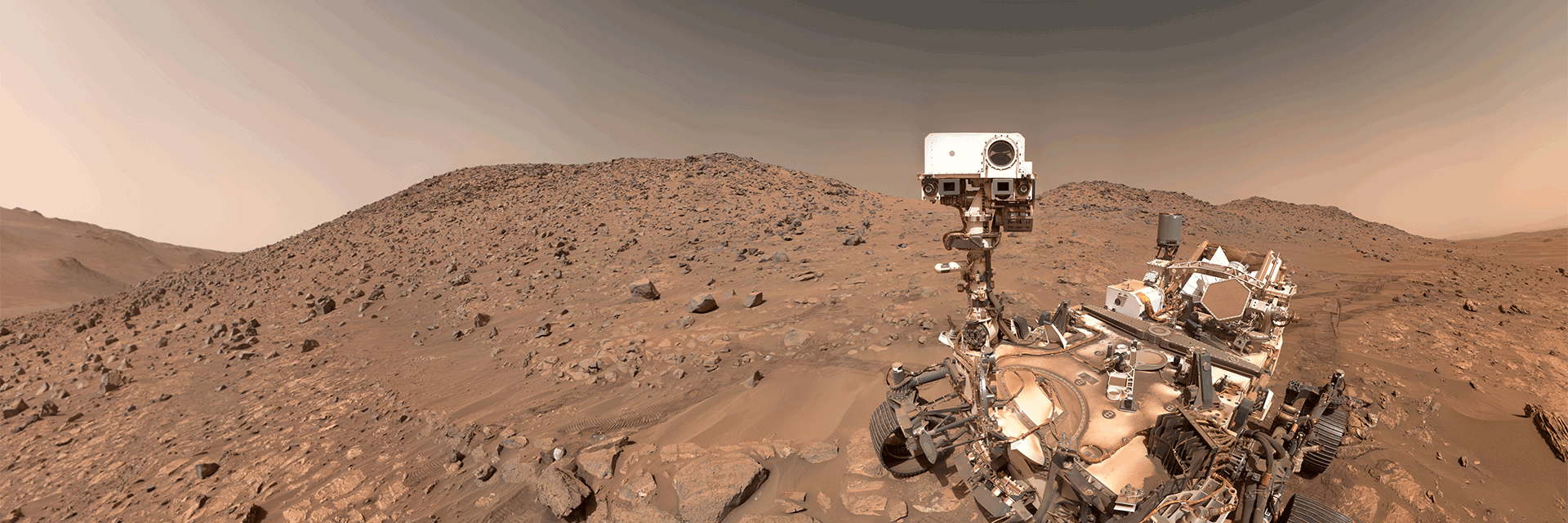
Activities for Everyone!
Educational activities and resources from Science Activation partners.
Citizen Science, or participatory science, projects that let you contribute to real NASA research.
Information for upcoming space events like full moons, meteor showers, and more.
Fun, flexible content for families, educators, and learners of all ages.
Even though we are only highlighting certain activities, feel free to explore other Science Activation and Citizen Science resources!
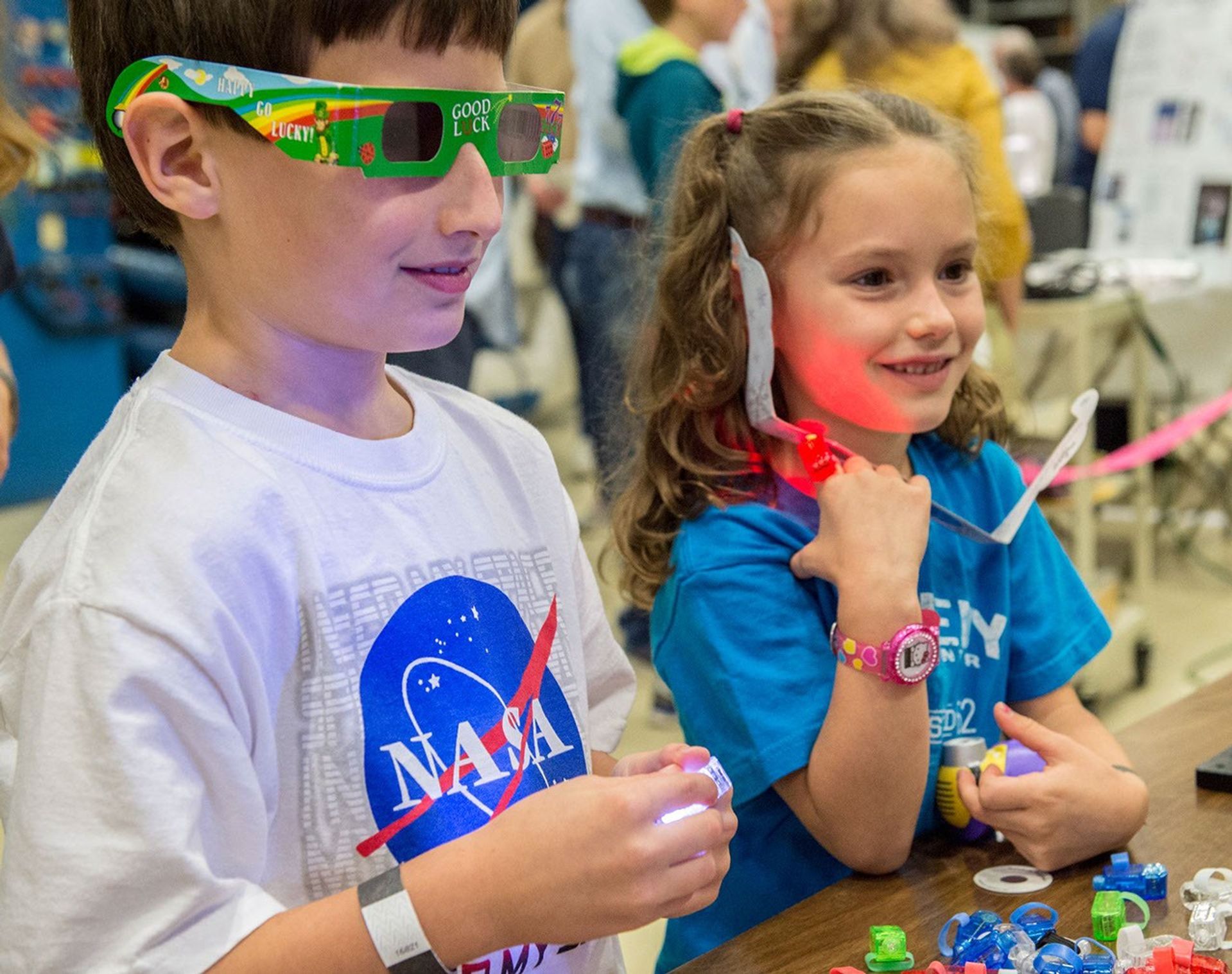
Weekly Highlights
June 21 - June Solstice
Celebrate the start of the season and launch your Summer of Planetary Science with the longest day of the year. Have you ever wondered why solstices happen, or what causes the seasons to change? It all comes down to Earth’s tilt and we’ve got the perfect way to explore it.
Dive into the Infiniscope “Tilt our World” digital lesson, an interactive experience that helps learners of all ages understand how Earth’s axial tilt and orbit around the Sun shape our seasons.
Let’s welcome the season with curiosity and willingness to learn! our hands-on activities that connect space to life on Earth.
- Infiniscope - “Tilt our World” - Play as Seasonal Avatar Mechanism, or S.A.M. for short, in an interactive experience where you can observe how the tilt directly impacts solar intensity, then apply those findings to predict seasons in the Southern Hemisphere.
- Explore our webpage and check out some NASA Science Activation and Citizen Science resources!
June 23rd – Women in Engineering Day
From building Mars rovers to decoding planetary data, women play a critical role in exploring the solar system through engineering. This summer, become your own engineer by diving into hands-on, engineering focused activities. Think like an engineer and build a remote sensing device to help choose a rover landing site on Mars, or test materials and experiment on space gloves with Science Activation partner PLANETS.
- PLANETS - Engineering Remote Sensing Devices - Design technologies and use NASA Mars data to choose a landing site for a rover!
- PLANETS – Engineering a Space Glove activity - Engineer space gloves to protect astronauts from cold, impact, and dust on a NASA mission!
- NASA@My Library - Touchdown – Build a shock absorbing system to protect “astronauts” when they land on the Moon and Mars.
- NASAeClips Engineering Design Packets – Learn the process of how engineers think and work through a variety of activities! While there, check out the Educator Guides that have activities for kids in grades K-12.
June 30th – Asteroid Day
Happy Asteroid Day! NASA is on the lookout for asteroids...and you can be too!
From tracking hidden space rocks to spotting comet-like activity, YOU can help NASA scientists make real discoveries from home. These Citizen Science projects are your launchpad to action. After that, take time to explore with Science Activation partners PLANETS and Infiniscope. Linked below are two incredible learning resources that dive deeper into the hazards that can come with floating objects in space.
- Exoasteroids Citizen Science project - Help Uncover potential asteroids around other stars by exploring real telescope data...no spaceship required!
- Active Asteroids Citizen Science project - Some asteroids behave like comets; can you help NASA find out why by examining images to contribute to NASA data.
- Daily Minor Planet Citizen Science project - Join the hunt by classifying moving objects in space and help track the ever-changing sky.
- Infiniscope - “Dino Doom” - A guided lesson on the meteor event that caused the mass extinction of nearly 75% of the plant and animal species on Earth.
- PLANETS Space Hazards – Learn about hazards in space and how we are protecting ourselves from them.
July 4th – Independence Day
Happy Independence Day! While getting ready to watch fireworks launch into the sky, build a rocket that you can launch with a straw! Our friends at NASA @ My Library have an incredible resource that lets you bring rocket science home.
However, tonight, fireworks aren’t the only thing lighting up the sky! Mercury will be at greatest eastern elongation, meaning it’s at its farthest point from the sun in our sky, making it one of the best times this year to spot it just after sunset! You can see Mercury just by looking in the evening sky.
After skywatching, take time to dive hands-on Mars science from home. Explore real Martian landscapes with NASA Solar Treks OR put your engineering skills to the test by designing your own Mars rover with PLANETS – no trip to space required.
- NASA Solar Trek - Mars - Have fun exploring Mars at the courtesy of the NASA Jet Propulsion Laboratory! Make sure to follow the tutorial in order to get the most out of your mission.
- PLANETS - Engineering Mars Rover Activity - Design and create remote sensing devices to help scientists learn about a far-away moon.
- NASA@My Library – Soda Straw Rockets – While getting ready to watch fireworks launch into the sky, build a rocket that you can launch with a straw.
July 10th – Full Moon
Tonight’s glowing Moon is just one stop in its monthly journey around Earth. Dive into the science behind the lunar phases and uncover how the Sun, Earth, and Moon work together to create the moon cycle we see from home. Whether it’s a crescent, gibbous, or full moon, each phase tells part of the story of our closest celestial neighbor. Infiniscope’s “Phases of the Moon” is a guided, interactive experience designed to bring the Moon’s journey to life. If you’d rather explore, you can experience the Moon’s surface using real NASA data with NASA Solar Trek to the Moon.
- Infiniscope - “Phases of the Moon” - Explore the phases of the Moon in this cool 80's retro style experience featuring a new AI friend, LuCIA!
- NASA Solar Trek - Moon - Have fun exploring the Moon at the courtesy of the NASA Jet Propulsion Laboratory! Make sure to follow the tutorial in order to get the most out of your mission.
July 20th – National Moon Day
Celebrate the anniversary of Apollo 11 by looking back at humanity’s first steps on the Moon and forward to the future of lunar exploration here at NASA.
On July 20th, 1969, Neil Armstrong and Buzz Aldrin made history by landing on the Moon. Now over 50 years later, NASA’s Artemis missions are preparing to return astronauts to the lunar surface - this time to stay. To commemorate this, make Moon Cookies at home by following Space Place’s delicious recipe. Want to make your own craters at home? NASAeClips has you covered, with a “Guide Lite” lesson on how to make a crater map with some paint and paper.
- Space Place – Moon Cookies – Make delicious Moon themed cookies in celebration of National Moon Day!
- NASAeClips – Exploring Craters and Crater Maps – Learn about how those circular features you see on the Moon formed!
- Apollo 11 historic video - This a NASA video about the story of the first Moon landing in July 1969. It depicts the principal events of the mission, from when it launched all the way through the post recovery activities of the astronauts aboard.
July 31st – Mars Mission Feature Day
Mars isn’t just red – it's full of mysteries waiting to be explored.
Discover how scientists study its rocky surface and uncover what gives the Red Planet it’s iconic color with Infiniscope’s “Red Rocks” digital lesson. This interactive experience breaks down
Geology and chemistry behind Mars’ hues.
Then, go from learner to researcher by joining Cloudspotting on Mars, a NASA Citizen Science project where you’ll help scientists identify high-altitude clouds in the Martian atmosphere using real data. Your participation could reveal insights into Mars’ changing climate.
- Infiniscope - “Red Rocks”: Why is Mars red? - Explore the Karijini Gorge in Australia and Oak Creek Canyon in Sedona, AZ searching for clues to the environments that formed the red rocks there and then apply that understanding to red rock formation on Mars.
- Cloudspotting on Mars Citizen Science project - Contribute to the fundamental understanding of Martian clouds by recognizing and marking patterns of clouds in graphed data!
August 9th – Full Moon
What better time to explore the Moon than when it’s fully lit in the night sky?
Take advantage of the full Moon by diving into real lunar data with NASA’s Moon Trek tool. Zoom in on detailed surface maps, trace the landing sites of past missions like Apollo 11, and investigate the features that shape each phase of the Moon.
Want to know how far the Moon in from Earth? We’ve got you! NASAeClips has great lessons that goes into depth about all sorts of lunar topics.
- NASA Solar Trek - Moon - Have fun exploring the Moon at the courtesy of the NASA Jet Propulsion Laboratory! Make sure to follow the tutorial in order to get the most out of your mission.
- NASAeClips – Distance to the Moon – Learn how far the Moon is from the Earth and take time to explore other Moon related Guides!
August 13th – Perseids Meteor Shower
The Perseids light up the sky every August, but did you know they’re caused by a trail of space dust left behind by Comet Swift-Tuttle?
As Earth passes through that debris, bits of comet dust burn up in our atmosphere – creating the glowing meteors you see streaking across the sky! It’s one of the brightest showers of the year.
After catching the show, you can keep learning by checking out the Infiniscope digital lesson “Dino Doom.” Feeling more hands on? The Sungrazer Citizen Science project lets anyone search for new comets by using real data from a solar-observing spacecraft. No telescope needed for this! Just curiosity and a connection.
- Sungrazer Citizen Science Project - Learn how to access the latest images from spacecraft missions and look for moving objects that may be comets in order to strengthen NASA’s understanding of comet orbits, composition, dust properties, evolution, and fragmentation.
- Infiniscope - “Dino Doom” - A guided lesson on the meteor event that caused the mass extinction of nearly 75% of the plant and animal species on Earth.
- NASAeClips – More than Just Dirty Snowballs – A lesson for those in grades 3-5 to create an ice cream comet model.
October 5 – International Observe the Moon Night
Every year, people around the globe gather to celebrate our nearest neighbor in space: the Moon!
Whether you’re gazing through a telescope, sketching what you see in the sky, or learning indoors, there are so many ways to join in. This year, celebrate with NASA: - Create your own impact craters! - Make impact craters at home by dropping different sized objects on flour and cocoa powder to see how craters form on the Moon’s surface. - NASA Moon Observation Journal! - Use our NASA Observation Journal to take note of what you see. Use the activity digitally, or print it out, in order to record what the Moon looks like each night.
This year, celebrate with NASA:
Create your own impact craters! - Make impact craters at home by dropping different sized objects on flour and cocoa powder to see how craters form on the Moon’s surface.
NASA Moon Observation Journal! - Use our NASA Observation Journal to take note of what you see. Use the activity digitally, or print it out, in order to record what the Moon looks like each night.
Check out these other awesome resources:
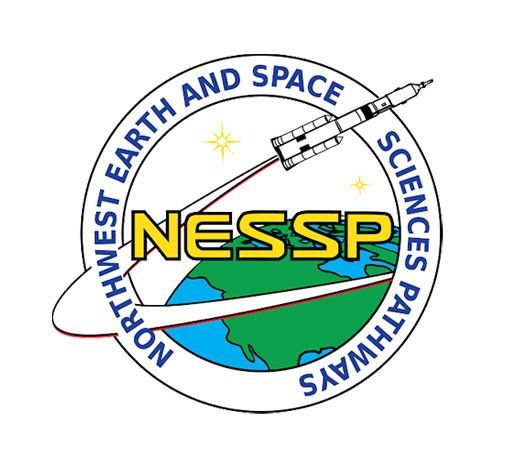
NESSP is an organization dedicated to help educators access tools and resources to drive and inspire underserved students in different types of learning environments. They provide educators with amazing hands-on lesson plans, supplies, professional development opportunities and summer stipends! Below is a link to their page and also their NESSP ROADS Professional Development program for both formal and informal educators in the U.S who want to explore NESSP’s NASA inspired lessons and activities.
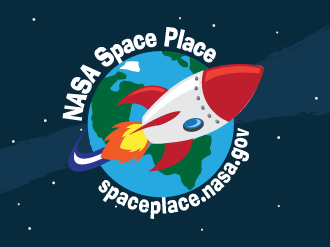
NASA Space Place
NASA Space Place is a website with the mission to inspire and enrich the learning of space and Earth science for upper-elementary-aged children. It has fun games, hands-on activities, informative articles and engaging videos that explain complex concepts in an entertaining and easy-to-understand format.

NASA @ My Library
Explore this organization that is a National Earth and Space Science initiative that connects NASA, Public Libraries and their communities! While we highlight them a few times in this webpage, they have TONS of amazing library and at-home activities to explore. Below is their STEM Activity Clearinghouse, a library of STEM resources intentionally made for Library usage. You can search and sort by audience, content level, and difficulty, making science accessible to all ages.
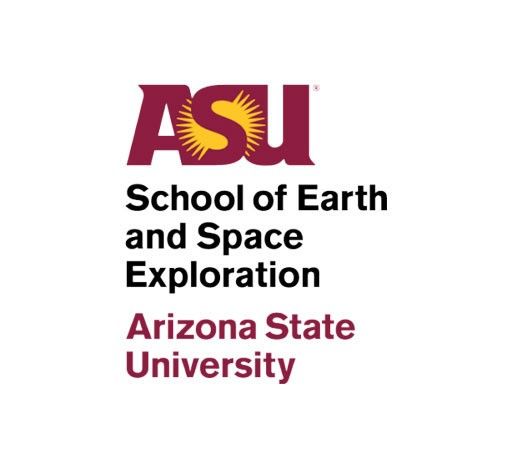
NASA Scope
NASA SCoPE was created with the intention of creating a community between NASA Science Activation, science and engineering experts, and early career scientists. This is brought to life through the creation of educational materials that are engaging, scientifically accurate, and increase participation of NASA Science! Explore their current opportunities and projects below.
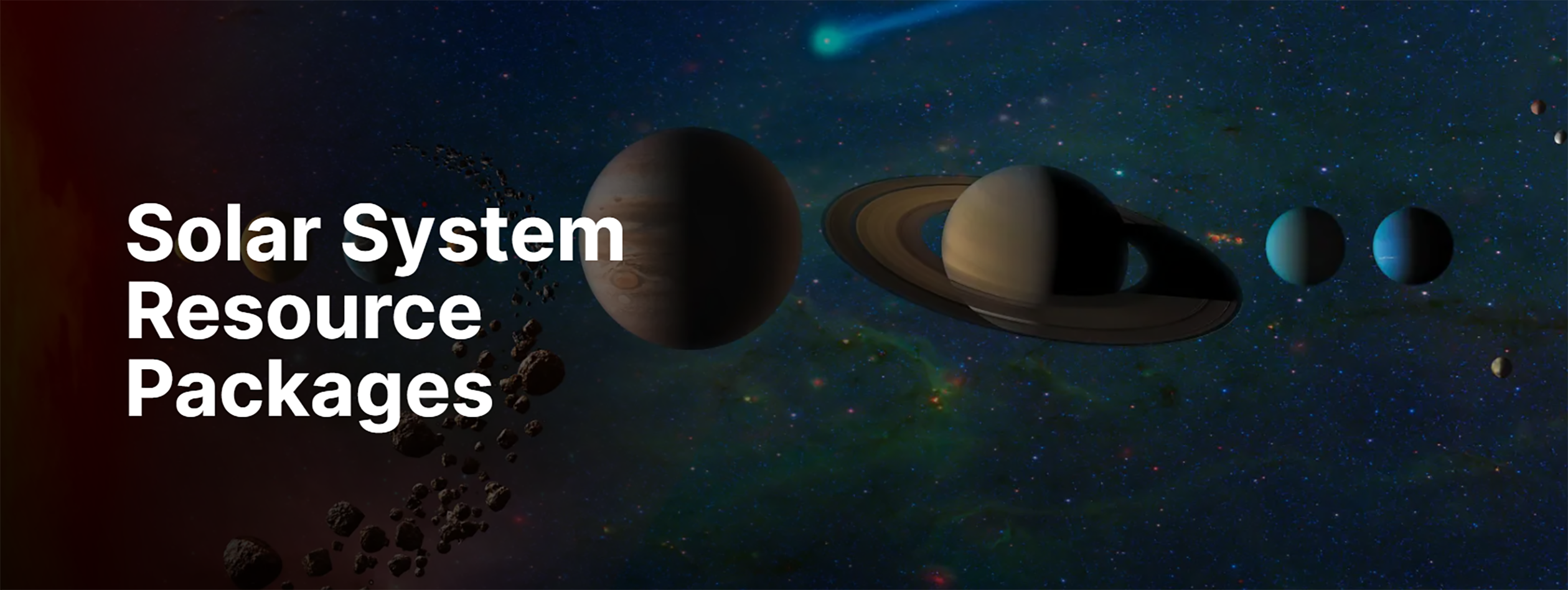
NASA Solar System Resource Packages
NASA has created curated collections of planetary resources which include activities that can be done at home, as well as videos, animations, printable graphics, and online interactives. These resource packages are suitable for educators, students, and anyone interested in learning more about our solar system. They are updated as mission milestones occur, and new scientific discoveries are made. Browse the available topics and start exploring now!















